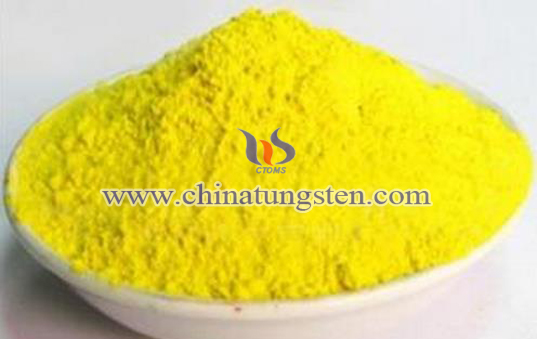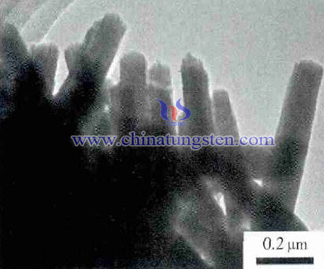Tungsten Oxide Nanorod

Introduction
Since indium storage property of nanocrystalline transition metal oxide (MO,M=Co, Ni, Cu, Fe) is found, other transition metal oxide such as CuO, Fe2O3, Fe2O4, Co3O4, WO3 can be transited by chemical reaction MOx+2xLi+=M+xLi2O. Its capacity is far better than graphite anode material in lithium ion battery. Among which WO3 is the most stable oxide of tungsten under room temperature. It is not only environmental friendly, but also is cheap. It has potential to be widely applied as lithium ion battery anode material. However, WO3 in lumpish has low electric conductivity, its volume changes greatly during charge-discharge process. Thus results in the instability of WO3. One of the improving methods is to synthesis WO3 nano material of different appearance. Then lithium storage property of the material is improved.
Preparing method: By hydrothermal method, tungsten oxide nanorod can be prepared on the indium tin oxide substrate.
Raw material: Sodium tungstate (AR: analytically pure); NaCl (AR); oxalic acid (AR); methylene blue (AR); hydrochroric acid. All solution is prepared by deionized water. ITO electric glass is under ultrasound for 10min in acetone, ethyl alcohol and deionized water, then dry it.
Preparation
(1) Dissolve 8.25g sodium tungstate in 25ml deionized water, then adding hydrochloric acid to adjust PH value into 2.0.
(2) Then dilute the solution to 250ml, put in PH meter, adding oxalic acid into solution, adjust PH value to 2.3, the precursor solution is obtained.
(3) Adding 0.3g sodium chloride into hydrothermal reactor, put in the ITO glass and make sure it is slanted. Then adding 20ml precursor solution, sealed it and thermal reacting for 4 hours under 170℃.
(4) After the reaction is done, cool it down to room temperature. Clean the ITO with deionized water and dry it. Tungsten nanorod of even size and bigger density is obtained.

